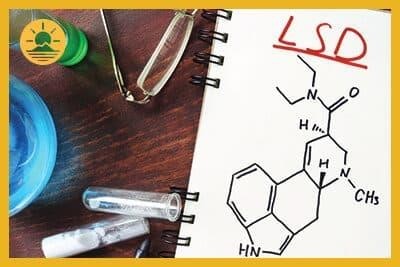Tryptamines can be referred to as a group of the organic chemicals found freely in nature and are known to be present in small doses in fungi, animals, and different plants . In humans, it is considered to be situated in the brain working as a neurotransmitter building bridges and sites where neural communications with the help of the nervous tissues take place.
Many Tryptamines are known to cause hallucinations while acting on the brain. These groups Realchems of chemicals are not known to be considered addictive but can cause cross-tolerance in other medicine or chemical types from the same group.

- LSD
It loosely translates into Lysergic acid diethylamide, it can be produced in the lab with the help of the fungus and can live on many grains such as rye. The basic working of the LSD is changing the mood of the subject and instilling a lot of artificial emotions, to begin with. At first, the drug was manufactured for alleviating the symptoms of a lot of mental health problems. Basically, it was used for the treatment of Schizophrenia and other related mental health problems. Researchers that are specifically drawn to medical research can use this drug for that purpose.
- Psilocin and Psilocybin
Both of these words are derived from the magic mushroom and thus when binding with the serotonin in the brain can cause hallucinations. It can have an immense number of side effects, to begin with, such as drowsiness, dizziness, tearing, sweating and chills are some of the added side effects caused by the Psilocin and Psilocybin.
- Dimethyltryptamine
The main purpose of the creation of this drug is for recreational abuse. The effect of Dimethyltryptamine doesn’t last for much longer but it is quite strong in its action. Hallucinations remain an inert effect for this specific family of drugs but these hallucinations are not that much of a problem as dizziness, fatigue, headache, and confusion are some of the things that linger across with this drug.
Chemical scientists can efficiently use this drug for research purposes while often laying too much intent on creating a separate class of drugs for treating mental health-related problems.
- Alpha-Methyl tryptamine
This substance is a stimulant and a hallucinogen and this drug is more popular in clubs and other recreational places. But other than that there are no known medical uses for this drug whatsoever. The drug has been used as an antidepressant in the past but there were no known benefits in that aspect whatsoever. But still, the chemical researchers can use this drug for research purposes as there is still a lot of potential in there.
- Foxy Methoxy
The chemical formula is equivalent to the psilocin or psilocybin. It was at its finest was designed as the club recreational drug. Some people either smoke it or snort it in powder or capsule form. Dilated pupils, nausea, diarrhea, and muscle tension are some of the most endearing side effects of using the drug. But still, the researchers can use this drug to perform many dedicated types of research on it.
